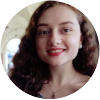Try our study magic for free
Summary: Mod2
- This + 400k other summaries
- A unique study and practice tool
- Never study anything twice again
- Get the grades you hope for
- 100% sure, 100% understanding
Remember faster, study better. Scientifically proven.
a PDF, study it super fast
- No sign up, email or credit card needed!
- AI makes unlimited flashcards
- Get unlimited quizzes and tests
- Ask AI anything
Create a notebook
- No sign up, email or credit card needed!
- Have and keep perfect overview
- Make flashcards, notes and mind maps
- Review, test and score!
Read the summary and the most important questions on MOD2
-
Theme IA LT1-7
This is a preview. There are 105 more flashcards available for chapter 25/10/2017
Show more cards here -
What are the macroscopical aspects of cancer?
Benign: small sometimes, well demarcated, slow growing, noninvasive, nonmetastatic, well differentation
Malignant: large, poorly demarcated, rapidly growing with hemorrhage and necrosis, locally invasive metastatic, poorly differentiated -
What information gives immunochemistry?
prognostic information of cancer (biomarkers)
predictive information of cancer (biomarkers)
both -
Immunochemistry, tumor typing, keratin
epithelial lineage -
Immunochemistry, tumor subtyping, TTF-1
thyroid tumors, adenocarcinoma of the lung -
What is fine needle aspiration?
cytology
You make a cell analysis, used in cancer diagnostics.
It is easily done.
You can stick a needle in the swelling and you can analyze the cells quite easily and rapidly.
You can see size and shape of the nucleus and the amount of cytoplasm, but you can't see any detailed information about the proteins.
Palpable mass (eg thyroid, breast, skin, lymph node)
Rapid, only cellular information
DD reactive vs cancer
Mostly followed by biopsy -
What is prefereable way in cancer diagnostics?
histology -
What does sustaining proliferative signaling mean?
Tumor cells are able to constantly signal themselves that they have to proliferate. -
What are agents of carcinogenesis?
- Aging (more indolent behaviour)
- Exogenous (enviironmental) factors
- Chronic inflammation -> risk factor to cancer development
- Viruses -> if we can't clear the infection, they can develop malignant transfomrmation
- genetics -
What are exogenous factors in scrotal cancer?
Soot. Not completely burned wood waste. -
What kind of cancer can sun exposure cause?
UV light is dangerous
Basal cell carcinoma and squamous cell carcinoma are the most common cancer types.
Melanoma accounts for less than 1% of skin cancer cases, but the vast majority of skin cancer leads to death.
UV causes DNA damage in making a pyrimidine dimer.
Read the full summary
This summary +380.000 other summaries A unique study tool A rehearsal system for this summary Studycoaching with videos
- Higher grades + faster learning
- Never study anything twice
- 100% sure, 100% understanding































